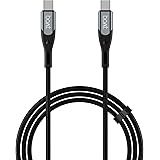Insulin is the hormone that is in charge of managing glucose in the blood. It also plays a central role in fat storage. “When we have more glucose than we need, insulin helps convert it into fat for storage,” Quintas explains. The problem comes when we develop insulin resistance—or, put another way, when our body’s cells become less sensitive to this hormone and, therefore, we are unable to process high glucose levels.
5 ways to manage insulin and energy
To reach balance, Quintas proposes an “insulin control diet,” which she says leads to better health because it benefits us in numerous ways—including helping to reduce tiredness after meals, hunger between meals and spurring our bodies to use stored fat efficiently as a source of energy. Furthermore, controlling our insulin can help us maintain muscle mass, stabilise our blood glucose levels, and improve our digestive health as well as reduce LDL (bad) and stabilise our liver profile, reducing our risk of fatty liver. Below are her five tips to balance glucose—
1. Eat carbohydrates with protein
“When we consume carbohydrates alone, especially if they have a high glycemic load, such as rice, pasta, or potato, they cause a rapid increase in blood glucose, leading to an insulin spike,” Quintas says. “This spike not only promotes metabolic imbalances, but can also cause an energy slump.” To prevent this from happening, she recommends adding protein in order to stimulate the secretion of glucagon, a hormone that counteracts the effects of insulin and helps keep the glucose level more stable.
2. Avoid liquid carbohydrates
Juices, sodas, and smoothies can cause insulin spikes. “Because they are in liquid form, the stomach doesn’t need to work hard to process them, which causes the sugar to quickly reach the bloodstream,” Quintas explains. “This sudden increase in glucose causes an insulin spike, which, as we already mentioned, favors the accumulation of fat and can generate hunger soon after.”
3. Eat every three to four hours
“Maintaining a constant supply of energy through small, frequent meals is key to avoiding insulin spikes and keeping the metabolism active,” Quintas says. She argues that if we let more time pass, our body may start using muscle mass as a source of energy instead of fat, lowering basal metabolism and causing a rebound effect. So be sure to have a healthy mid-morning and afternoon snack, as “this will help us arrive less hungry to our main meals.”
4. Eat within one hour of waking
Quintas warns that after a long overnight fast, our glucose stores are low, which means we must eat to keep the body going: “If we don’t eat soon after waking up, our body could start using muscle mass as a source of energy.” She advises eating first thing in the morning, even if it’s just a little yogurt or a coffee with milk: “After a few hours you can have a bigger breakfast. This will help our metabolism to get the batteries without forcing a large meal first thing.”
5. Don’t work out on an empty stomach
Some swear by the benefits of working out on an empty stomach but Quintas says this is a mistake—not only because of scarce morning glycogen reserves but also because it increases the risk of injury by using muscle mass as a source of energy. “A small portion of carbohydrates and protein before exercise ensures greater energy availability and protects muscle mass,” she says.
This story first appeared on Vogue.com
Also read:
Best time to eat protein, according to experts
The expert’s guide to working out during Ramadan
Why broccoli is one of the healthiest vegetables you can eat
Source link
itel Super Guru 4G Max | Dual 4G | Max 3" Display | Smart AI Voice Assistant | 2000 mAh Battery | Type-C Charger | Cloud App Support | Bluetooth | Black
₹1,899.00 (as of December 21, 2025 00:00 GMT +05:30 - More infoProduct prices and availability are accurate as of the date/time indicated and are subject to change. Any price and availability information displayed on [relevant Amazon Site(s), as applicable] at the time of purchase will apply to the purchase of this product.)boAt Type C to C 65W Fast Charging Cable with 480 Mbps Data Transfer, Tangle-Free Cable in Premium Nylon Braided Design (Carbon Black)
₹149.00 (as of December 21, 2025 00:00 GMT +05:30 - More infoProduct prices and availability are accurate as of the date/time indicated and are subject to change. Any price and availability information displayed on [relevant Amazon Site(s), as applicable] at the time of purchase will apply to the purchase of this product.)HP 64GB MicroSD Memory Card SDXC mx310 Class 10, UHS-I, U1 Card, Upto 100MB/s R, 10 Y Warranty
₹539.00 (as of December 21, 2025 00:00 GMT +05:30 - More infoProduct prices and availability are accurate as of the date/time indicated and are subject to change. Any price and availability information displayed on [relevant Amazon Site(s), as applicable] at the time of purchase will apply to the purchase of this product.)YATWIN Silicone Case for iPhone 17 Pro Max, Soft-Touch, Shockproof, DustProof, Antiskid Phone Cover for Apple iPhone 17 Pro Max - Orange
₹299.00 (as of December 21, 2025 00:00 GMT +05:30 - More infoProduct prices and availability are accurate as of the date/time indicated and are subject to change. Any price and availability information displayed on [relevant Amazon Site(s), as applicable] at the time of purchase will apply to the purchase of this product.)Portronics Luxcell Uno 10K 10000 mAh 22.5W Fast Charging Power Bank with Detachable Type C Cable, Ultra Slim Power Bank with Mach USB-A Output, Type C PD Output, Type C Input, Wake Up Button(Mocha)
₹799.00 (as of December 21, 2025 00:00 GMT +05:30 - More infoProduct prices and availability are accurate as of the date/time indicated and are subject to change. Any price and availability information displayed on [relevant Amazon Site(s), as applicable] at the time of purchase will apply to the purchase of this product.)Samsung Galaxy M36 5G (Serene Green, 6 GB RAM, 128 GB Storage)| Circle to Search| Google Gemini| Corning Gorilla Glass Victus+| 7.7mm Slim| AI Enhanced 50 MP OIS Triple Camera| Unmatched Nightography
₹14,999.00 (as of December 21, 2025 00:00 GMT +05:30 - More infoProduct prices and availability are accurate as of the date/time indicated and are subject to change. Any price and availability information displayed on [relevant Amazon Site(s), as applicable] at the time of purchase will apply to the purchase of this product.)Xiaomi Power Bank 4i 20000mAh 33W Super Fast Charging PD |Smart 12 Layer Protection|Type C Input & Output|Triple Output Ports|Supports Android,Apple, Tablets, Earbuds,Watch(MI Powerbank),Black
₹1,859.00 (as of December 21, 2025 00:00 GMT +05:30 - More infoProduct prices and availability are accurate as of the date/time indicated and are subject to change. Any price and availability information displayed on [relevant Amazon Site(s), as applicable] at the time of purchase will apply to the purchase of this product.)Robustrion Tempered Glass for Lenovo Idea Tab 11" Screen Protector Guard for Lenovo Idea Tab 11 inch Tablet - 1 Pack
₹399.00 (as of December 21, 2025 00:00 GMT +05:30 - More infoProduct prices and availability are accurate as of the date/time indicated and are subject to change. Any price and availability information displayed on [relevant Amazon Site(s), as applicable] at the time of purchase will apply to the purchase of this product.)iPhone 17 256 GB: 15.93 cm (6.3″) Display with Promotion, A19 Chip, Center Stage Front Camera for Smarter Group Selfies, Improved Scratch Resistance, All-Day Battery Life; Mist Blue
Now retrieving the price.
(as of December 21, 2025 00:00 GMT +05:30 - More infoProduct prices and availability are accurate as of the date/time indicated and are subject to change. Any price and availability information displayed on [relevant Amazon Site(s), as applicable] at the time of purchase will apply to the purchase of this product.)










